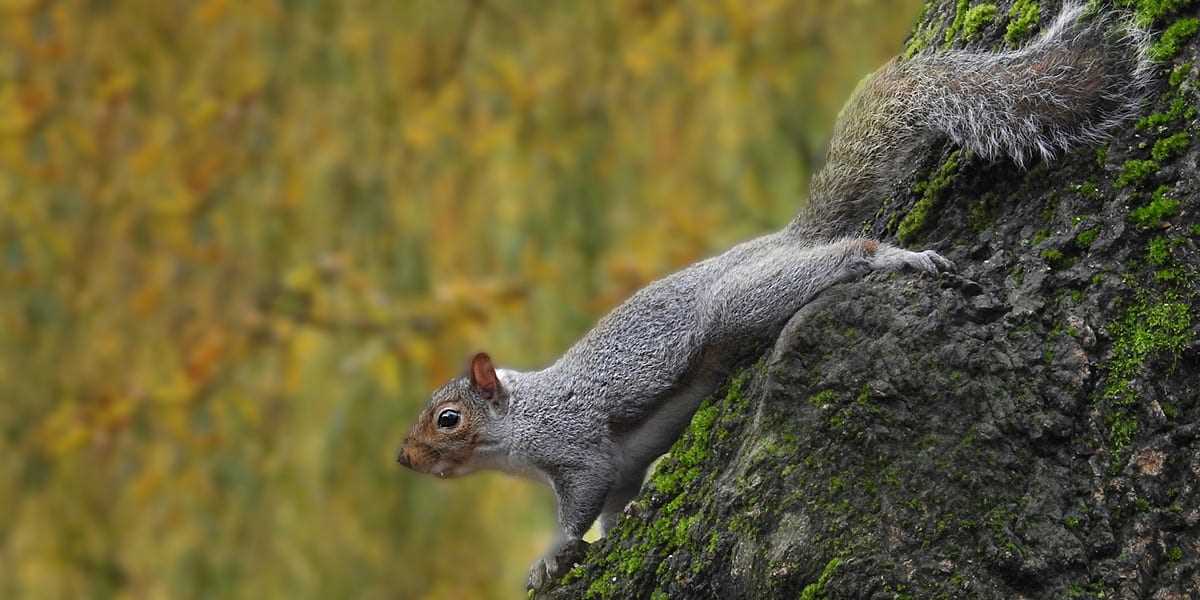Contents
The Ultimate Guide to Safely and Effectively Shooting Squirrels: Tips and Techniques

Squirrels can be a common nuisance for homeowners, causing damage to property and gardens. If you’re dealing with a squirrel problem, it may be necessary to resort to shooting as a means of control. However, it’s important to approach this task with caution and responsibility. In this ultimate guide, we’ll walk you through the steps on how to safely and effectively shoot squirrels.
Step 1: Know the Laws
Before you even think about shooting squirrels, it’s crucial to familiarize yourself with the local hunting and firearm laws in your area. Shooting squirrels may be legal in some regions, but illegal in others, especially in urban or residential areas. The last thing you want is to find yourself on the wrong side of the law, so always check the regulations before proceeding.
Step 2: Choose the Right Equipment
When it comes to shooting squirrels, you’ll need the appropriate equipment to ensure a clean and humane kill. A small-caliber rifle or shotgun is typically recommended, as they provide enough power to take down a squirrel without causing excessive damage. Make sure to practice your shooting skills and familiarize yourself with your chosen firearm before attempting to shoot any squirrels.
Step 3: Pick a Safe Location
Before taking aim, it’s essential to consider the safety of your surroundings. Select a location that provides a clear line of sight and a safe backdrop for your shots. Avoid shooting in densely populated areas or near buildings, as stray bullets can have dangerous consequences. Always prioritize the safety of yourself and others when shooting squirrels.
Step 4: Aim and Shoot
When you’ve found a suitable location and are ready to shoot, remember to aim for a clean kill. Aim for the head or heart area to ensure the most humane and swift death. Take your time, breathe, and squeeze the trigger gently. Once you’ve successfully shot a squirrel, it’s important to handle the animal with care and dispose of it responsibly.
Disclaimer: It’s important to note that shooting squirrels should only be done when necessary for safety or property protection reasons. Always prioritize non-lethal methods of control when possible, and respect the environment and local laws.
By following these steps, you can safely and effectively deal with squirrel problems in your area. Remember, responsible shooting is crucial, so always prioritize safety and legality when taking action.
Section 1: Understanding the Basics

Before you embark on your squirrel-shooting adventure, it is important to have a solid understanding of the basics. Squirrels are small, bushy-tailed rodents that can be found in many different environments, such as forests, parks, and even urban areas.
Understanding squirrel behavior is crucial in order to safely and effectively shoot them. Squirrels are agile and quick, making them difficult targets. They have a keen sense of hearing and excellent eyesight, so it is important to approach them quietly and camouflage yourself to avoid scaring them away.
Additionally, it is essential to familiarize yourself with the local regulations and laws regarding squirrel shooting. Some areas may require permits or have restrictions on the type of firearms that can be used. It is important to always follow these laws to ensure the safety of yourself and others.
Another important aspect to consider is the ethical implications of squirrel shooting. While it is a popular recreational activity for some, it is important to remember that squirrels are living creatures and deserve to be treated with respect. It is recommended to only shoot squirrels for legitimate reasons, such as pest control or hunting for food.
In conclusion, understanding the basics of squirrel shooting is essential before embarking on this activity. By familiarizing yourself with squirrel behavior, local regulations, and ethical considerations, you can ensure a safe and effective squirrel-shooting experience.
Choosing the Right Firearm

When it comes to hunting squirrels, choosing the right firearm is essential for both safety and effectiveness. It is important to select a firearm that is appropriate for hunting small game like squirrels, as using the wrong weapon can not only make the hunt more difficult but also increase the risk of injuring yourself or others.
When selecting a firearm for squirrel hunting, there are a few factors to consider. Firstly, you want to choose a firearm that has enough power to effectively take down a squirrel, but not so much power that it would cause excessive damage or make the meat difficult to salvage.
A .22 caliber rifle is a popular choice for hunting squirrels, as it provides enough power to take down a squirrel with a well-placed shot, but it is not overly powerful. This makes it an ideal choice for hunters looking to cleanly and ethically harvest squirrels for both their meat and fur.
Another option to consider is a shotgun with a smaller gauge, such as a 20 or 410 gauge. Shotguns are versatile firearms that can be used for hunting a variety of game, including squirrels. However, it is important to use the appropriate size shot and choke for squirrels to ensure a clean kill and minimize damage to the meat.
When choosing a firearm, it is also crucial to consider your own comfort and familiarity with the weapon. The more comfortable and confident you are with your firearm, the better able you will be to safely and accurately shoot squirrels. Take the time to handle and shoot different firearms to find the one that feels best for you.
Overall, choosing the right firearm for squirrel hunting involves finding a balance between power, precision, and personal comfort. By selecting a firearm that is appropriate for hunting squirrels, you can ensure a safe and effective hunt while also maximizing the enjoyment and satisfaction of your hunting experience.
Selecting the Optimal Ammunition

When it comes to shooting squirrels, selecting the right ammunition is essential. Using the right type and size of bullets can ensure a safe and effective hunting experience. Here are a few factors to consider when choosing the optimal ammunition:
1. Caliber: The caliber of the bullet determines its diameter and is an important consideration when selecting ammunition for squirrels. The most commonly used calibers for squirrel hunting include .22 LR, .17 HMR, and .22 WMR. These calibers provide enough power to take down squirrels without causing excessive damage.
2. Bullet Type: There are various bullet types available for hunting squirrels, including hollow point, round nose, and flat point. Hollow point bullets are designed to expand upon impact, maximizing the damage and ensuring a quick and humane kill. Round nose and flat point bullets are also effective options, especially if you prefer a more traditional bullet design.
3. Bullet Weight: The weight of the bullet can affect its performance and trajectory. Lighter bullets tend to have a flatter trajectory, making them ideal for shorter range shots. Heavier bullets, on the other hand, may offer better penetration and are suitable for longer distances.
4. Shot Placement: Regardless of the ammunition you choose, shot placement is key to quickly and ethically dispatch squirrels. Aim for the vitals, which include the heart and lungs. This will ensure a quick and clean kill, minimizing suffering.
5. Local Regulations: Before purchasing and using any ammunition for squirrel hunting, be sure to check the local regulations and laws. Certain areas may have specific restrictions on caliber or bullet type, so it’s important to stay informed and comply with the regulations.
Taking the time to select the optimal ammunition for squirrel hunting is crucial for a safe and effective shooting experience. By considering factors such as caliber, bullet type, weight, and shot placement, you can increase your chances of a successful hunt while ensuring the ethical treatment of squirrels. Happy hunting!
Safety Precautions to Keep in Mind

When shooting squirrels, it is important to prioritize safety to prevent any accidents or injuries. Here are some safety precautions that you should keep in mind:
| 1. Wear Protective Gear | Always wear appropriate protective gear, such as safety goggles and earplugs, to safeguard yourself during the shooting. |
| 2. Choose the Right Firearm | Make sure to select a firearm that is suitable for squirrel hunting and that you are comfortable and proficient in using. It is important to understand the specific regulations and laws regarding firearm use in your area. |
| 3. Find a Safe Shooting Location | Identify a location that provides a clear line of sight and a safe shooting backdrop. Avoid shooting near populated areas, houses, or roads, as this can pose a risk to others. |
| 4. Be Aware of Your Surroundings | Always be mindful of your surroundings and identify potential hazards, such as other hunters or wildlife in the area. Never shoot if there is a chance of endangering others. |
| 5. Practice Proper Firearm Handling | Follow proper firearm handling techniques, including keeping your finger off the trigger until you are ready to shoot and always treating the firearm as if it is loaded. |
| 6. Communicate with Others | If you are hunting with others, establish clear communication and ensure everyone is aware of each other’s locations and shooting zones. This will help prevent any accidental injuries. |
| 7. Dispose of Carcasses Appropriately | After shooting squirrels, make sure to properly dispose of the carcasses to prevent the spread of disease and to avoid attracting other wildlife. |
| 8. Follow Local Laws and Regulations | Always abide by the local laws and regulations regarding squirrel hunting, including obtaining necessary permits or licenses. Familiarize yourself with any specific restrictions or limitations in your area. |
By following these safety precautions, you can enjoy shooting squirrels in a safe, responsible, and effective manner.
Section 2: Perfecting Your Shooting Technique

When it comes to shooting squirrels, having a solid shooting technique is crucial to ensuring a safe and effective hunt. Here are some tips to help you improve your shooting skills:
1. Practice regularly: Like any skill, shooting requires practice. Set aside dedicated time to practice your shooting technique regularly. This will help you build muscle memory and improve your accuracy.
2. Focus on your stance: Your stance is the foundation of a good shooting technique. Stand with your feet shoulder-width apart, parallel to the target. Distribute your weight evenly on both feet, and keep your body relaxed yet stable.
3. Hold your rifle correctly: Proper grip and control of your rifle are essential for accuracy. Ensure that your dominant hand is firmly gripping the stock, while your non-dominant hand supports the barrel. Maintain a relaxed and comfortable grip, avoiding any unnecessary tension.
4. Aim with precision: Take your time to aim carefully before pulling the trigger. Properly align your sights or scope with the target, focusing on the squirrel’s vital area. Take into account factors such as wind speed and distance to make necessary adjustments.
5. Shoot with a smooth trigger pull: A jerky or sudden trigger pull can cause your shot to veer off target. Instead, practice a smooth and controlled trigger pull. Apply steady pressure without jerking the trigger to maintain accuracy.
6. Follow through: After pulling the trigger, maintain your position and follow through with your shot. This means keeping your sights on the target until the bullet has reached its destination. This will help you track the squirrel and make any necessary corrections for future shots.
Remember, safety should always be your top priority when shooting. Always ensure that you have a clear shooting lane and a safe backdrop. Practice these shooting techniques in a controlled and secure environment to perfect your skills before heading out into the field.
Proper Stance and Body Position

In order to shoot squirrels safely and effectively, it is crucial to maintain a proper stance and body position. The right stance and body position will not only improve your accuracy but also ensure that you are shooting in a safe and controlled manner.
When it comes to the stance, you should begin by standing with your feet shoulder-width apart. This will provide you with a stable base and help you maintain your balance while shooting. Keep your knees slightly bent to absorb any recoil and allow for better control.
Next, focus on your body position. Position your body in a way that allows you to have a clear view of your target and a comfortable shooting position. Your body should be slightly turned towards the target, with your non-dominant foot slightly forward. This will enable you to achieve a more stable shooting platform and improve your overall accuracy.
When holding the firearm, ensure that you have a firm grip and a proper alignment with your aiming eye. Your arms should be slightly relaxed and extended, but not fully locked. This will ensure that you have enough control and stability while shooting.
Remember, practice makes perfect. Take the time to practice your stance and body position before going out for your shooting session. This will help you become more familiar with the proper form and establish muscle memory, leading to improved shooting skills in the long run.
Aiming and Sight Alignment

When it comes to shooting squirrels, aiming and sight alignment are crucial for a successful and humane kill.
Squirrels are fast and agile creatures, making it important to take your time and aim carefully. Before taking the shot, make sure you have a clear view of the squirrel and that there are no obstacles in the way.
Proper sight alignment is vital for accuracy. This involves aligning the front sight with the rear sight and focusing on the target. The front sight should be centered in the rear sight, and both should be level with your eye. This allows for precise aiming and helps ensure that your shot will hit the intended target.
It’s also essential to have a steady shooting position. This can be achieved by using a shooting stick or leaning against a solid object, such as a tree. This provides stability and reduces the chance of your aim being disturbed by any involuntary movements.
Remember to always be aware of your surroundings and follow all applicable laws and regulations regarding squirrel hunting. Safety should always be your top priority, ensuring a responsible and enjoyable hunting experience.</p

A skilled hunter, dedicated conservationist, and advocate for ethical practices. Respected in the hunting community, he balances human activity with environmental preservation.

Are there any humane and non-lethal methods for squirrel control that I can consider before resorting to shooting them?